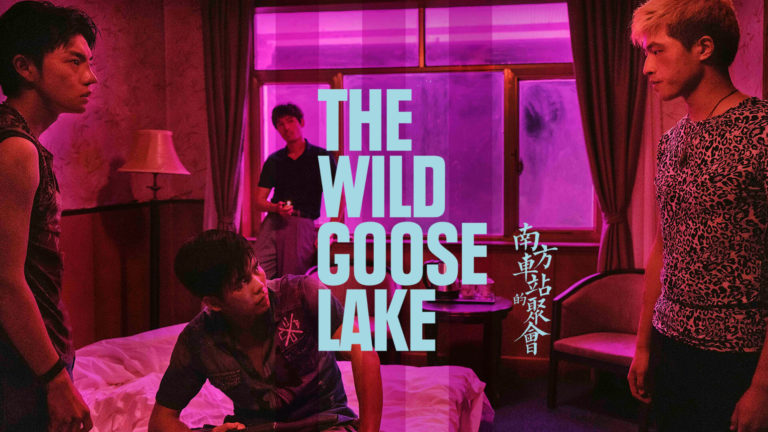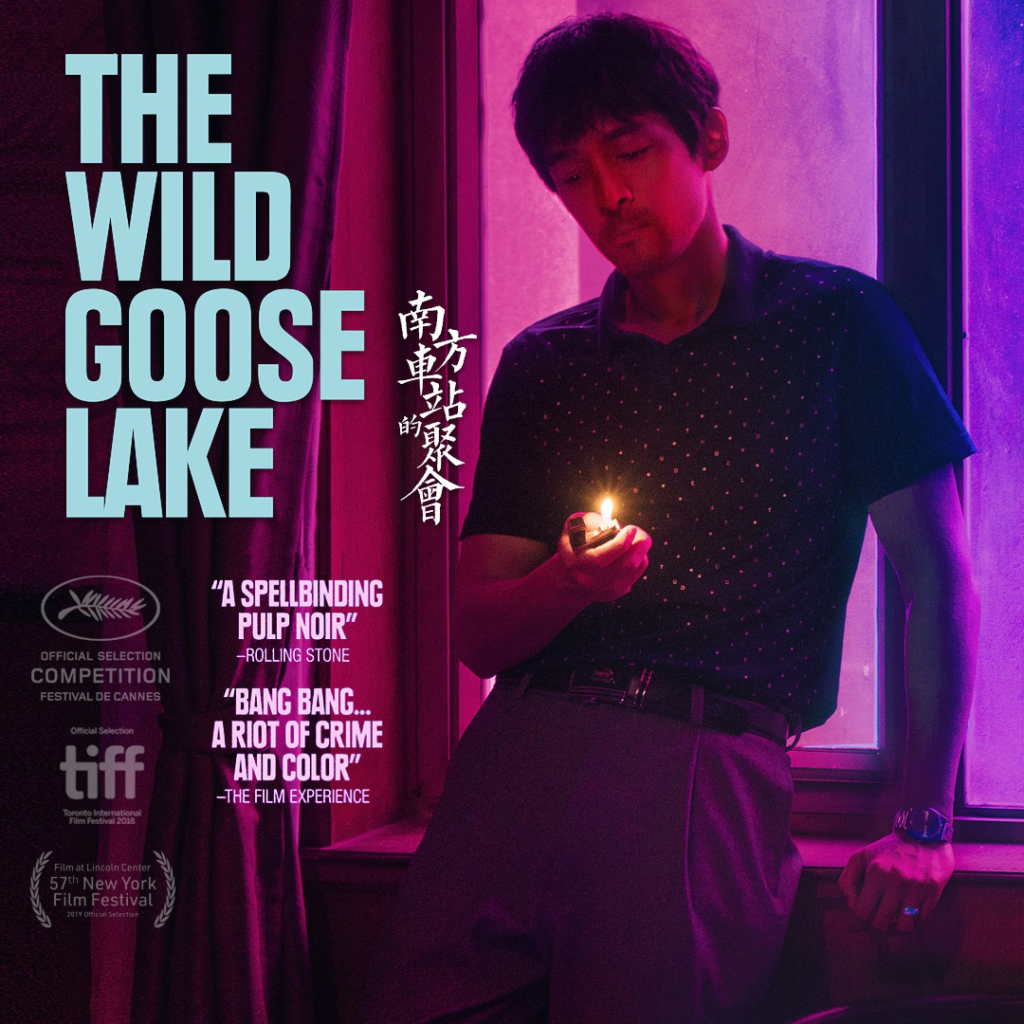
A man lights a cigarette in the pouring rain, eyes peeled. Not seeing what he’s after, he slowly walks out of frame. Where he had stood, a woman enters behind an umbrella, the neon colors of the train station reflected in the heavy raindrops bouncing off it. She folds the umbrella, revealing a purse from which her free hand takes out a cigarette of its own. Though still out of frame, her eyes are undoubtably on the man who has his back toward her as she approaches. Got a light?
In collaboration with Manhattan’s Film Forum, filmmovementplus.com is streaming Yi’nan Diao’s “The Wild Goose Lake”, opening with that meticulously composed single take of ambience and tone – the stylish sensuousness of noir.
True to form, we’re then taken from this shot of Hitchcockian flow on a flashback of what led to this encounter. The man is Zhou, played by Ge Hu. At a meeting of rival gangs disputing rights of territory, he holds his own with his own two hands amidst a fight that breaks out when someone’s gun goes off, leaving another guy with one less kneecap. Cooler heads prevail with the agreed-upon resolution that the more coveted territory will be granted to whichever gang steals more motorbikes that night. The attempted murder of one of the participants during the ensuing contest leads to the accidental killing of a cop, and Zhou propelled into hiding from both law enforcement and fellow criminals, eventually bringing us back to the moment we started at; the stage set on which the rest of the picture expands from Zhou and the woman he meets at the train station – a prostitute of course, named Liu played by Lun-Mei Kwei, now on the run together.
Think of the sequencing of chapters in the literature of George R.R. Martin or William Faulkner. Now think of the blocked sequences of Quentin Tarantino’s “Pulp Fiction” (1994) and “Kill Bill” (2003/2004), or Christopher Nolan’s “Memento” (2000) and “Dunkirk” (2017). Such out-of-bounds, not necessarily linear storytelling choices which an unaware audience may attribute primarily to the styles of those two modern filmmakers have been in cinema as far back as the 1910’s, running contrary to the patterns of Hollywood storytelling and continuity which were becoming normative at that time. It wasn’t until the 1940’s that such coloring outside the lines became prevalent, birthing the genre eventually known as noir. The period was a virtual laboratory, or at least a haven, of expanding narrative style in which filmmakers, tapping into the novelization of cinematic form, as well as healthy competition among directors to outdo each other stylistically, made flashbacks, dream sequences, multiple points of view, and non-linear storytelling in general, prevalent throughout the decade. The block construction found in much of Tarantino’s and Nolan’s bodies of work, that is, the division of their narrative sequences into chapters, even regardless of linearity, was rampant seven decades ago. Film scholar David Bordwell has pointed out that it even occurred from time to time, as evident in pictures like Michael Curtiz’s “Mildred Pierce” (1945) which used flashback as a replay – think the climax of “Jackie Brown” (1997) or the entirety of Robert Siodmak’s “The Killers” (1946) – that details within those replays were purposely cheated into incongruence for an audience that did not have the luxury to rewind and compare them with previous scenes now being repeated.
As demonstrated previously in his “Black Coal, Thin Ice” (2014), Yi’nan Diao knows the traditional attributes of noir while expanding upon the canon with his own take on a Chinese underworld that is perhaps more of a slow burn than are the works of other organized crime and action-centric filmmakers like John Woo and Johnnie To. The most instantly recognizable attribute Yi’nan Diao brings to the genre is a near Neorealism juxtaposed with a vibrancy of color patterned within meticulously framed shots and set pieces, as difficult as such a dichotomy may be to imagine. Those touches brought to the genre in “The Wild Goose Lake” are that jaw-dropping.
There are sequences that are drop-dead gorgeous such as a chase among the wildlife within a zoo, and flashing lights on the shoes of a community of dancers leading to a gunfight at the local market. Its complex narrative of betrayal and double crosses, relationships understood and those still evolving between Zhou’s own gang who allegedly sent Liu to find him, the rival gang responsible for his status as a fugitive, and even the point of view of his neglected wife with a big bag of cash offered by the state as a reward for his capture or death, would benefit from being clearer. That does, however, put “The Wild Goose Lake” in good company with Howard Hawks’s “The Big Sleep” (1946) and Paul Thomas Anderson’s “Inherent Vice” (2014) which beg you to not even bother taking on the Sisyphean task of coherently unraveling every nook and cranny of their heavily-nuanced plots.
The benevolence of the woman, Liu, is called into question, as it must be, and Zhou is intelligent enough to know that an unknown woman approaching you for a light, eventually volunteering to relieve your insurmountable tension through sexual favors, may in fact herald the most unlucky encounter of your life despite whatever auspices she claims to have been sent by as the solution to your problems, which of course, have only just begun.
ABOUT GIÒ CRISAFULLI:
Giò Crisafulli is the Chief Entertainment Critic for NOIAFT and writer/director of “Children of God” which he is producing with Melissa Batista at Zio Ciccio Cinema, in which an actor who’s the son of a priest and nun is on the verge of stardom while having an affair with a painter from Italy. A sensational and intuitive look into the romance of two people, it will show how any relationship can be a fleeting microcosm of one’s life.
Check out Giò’s interviews at Lincoln Center’s Opens Roads New Italian Cinema:



